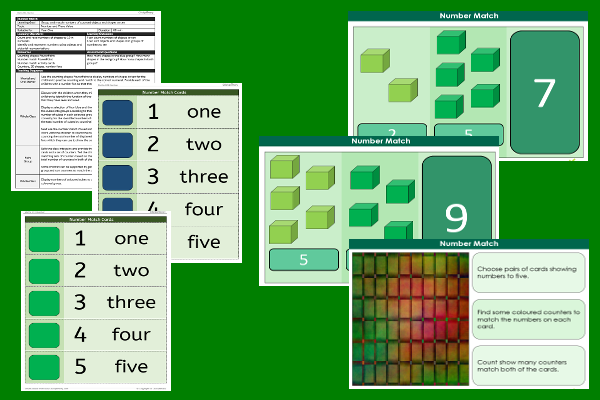Lesson Three – Number Match

This maths teaching pack for Key Stage One gets the children to model and record how to group and match different numbers of counted objects and shapes showing pairs of number bonds to ten.
The class can practise using concrete equipment to show the value of the pairs of selected numbers to ten and count the matching sums of pairs of the selected number cards to five.
Download this teaching pack including a lesson plan, classroom activities and an interactive presentation to model and record how to group and match different numbers of counted objects and shapes showing pairs of number bonds to ten
Activities in this teaching pack include a set of cards showing each of the numbers to ten that can be used to model and record how to group and match different numbers of counted objects and shapes to illustrate each of the selected pairs of number bonds to ten.
The interactive presentation gets the children to explore how to group and match different numbers of counted objects and shapes to ten.
This lesson is part of a maths scheme of work to get the children to identify and record how to count and group different numbers to ten into matching sets of shapes and digits using concrete objects and diagrams. There are teaching activities for shared learning, differentiated worksheets to support independent learning and interactive presentations to introduce concepts and key skills.
-

Determinant Lists
Explain and model how to make lists of objects used and found in different locations to match the correct determinants of a and an
-

English SPAG Assessment
Assess abilities in composing sentences for fiction and non-fiction using the correct spellings, punctuation marks and grammar vocabulary phrases
-

Maths Arithmetic Assessment
Assess abilities in solving arithmetic number problems for addition, subtraction, multiplication and division when working with informal and formal written calculations
-

Environment
Identify and describe some of the special landscapes and locations that can be found in the world and reflect on how they can be protected and preserved for the future
